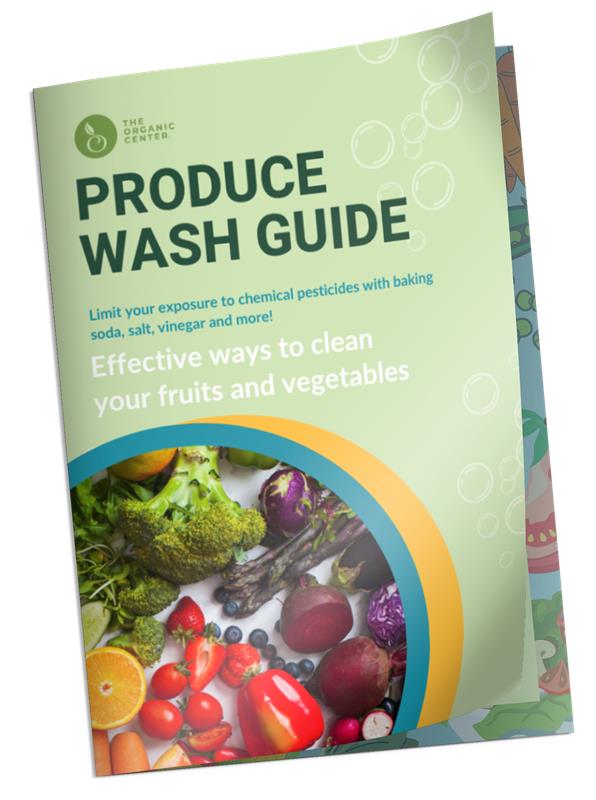Organic Health Benefits Part 2: The Nutritional Benefits of Organic Dairy
Do you think eating organic is better for you? Recent studies are backing up what many thought: organic foods do indeed have a healthier nutritional profile than their conventional counterparts. And they’re also lower in pesticide residues. This three-part series shares some of the science behind the nutritional benefits of organic foods. This post, part 2 of 3, covers organic dairy.
Part 2: The Nutritional Benefits of Organic Dairy
 Did you know?
Did you know?
- Organic dairy animals must be pasture-grazed throughout the grazing season.
- All of the supplemental feed organic dairy animals are fed must be organic, including no persistent pesticide use.
- Organic dairy animals are raised without antibiotics or endocrine disrupting chemicals such as hormones and steroids.
- Organic dairy products have higher amounts of omega-3 fatty acids than conventional dairy.
Nutritional benefits of organic dairy are clear.
When it comes to organic dairy, there’s a lot of research showing the nutritional benefits. For example, studies show that organic dairy has a healthier omega-6 to omega-3 fatty acid ratio than conventionally produced milk.
The most recent study found that organic milk contained 25% less omega-6 fatty acids and 62% more omega-3 fatty acids than conventional milk. That’s a good thing. You want higher omega-3 and lower omega-6 fatty acids to help maintain cardiovascular health and to support your immune system.
The findings of this study aren’t new, however. As early as 2006 published research supported the healthier omega fatty acid profiles of organic milk. The average western diet has an excess of omega-6 fatty acids, so switching to organic milk may be a good step to getting that ratio more in line.
Another benefit of organic dairy: no antibiotics allowed.
 The agricultural use of antibiotics has been in the news a lot lately because of the rise in antibiotic-resistant bacteria.
The agricultural use of antibiotics has been in the news a lot lately because of the rise in antibiotic-resistant bacteria.
A 2013 Centers for Disease Control and Prevention (CDC) report shows that in the United States, over 2 million illnesses and 23 thousand deaths are caused by antibiotic-resistant bacteria every year, and the World Health Organization declared antibiotic-resistant bacteria a global epidemic.
In conventional agriculture, antibiotics aren’t just used to treat infections in animals. The majority of antibiotics used in agriculture are given to promote growth because they can increase an animal’s rate of weight gain by 3-5%.
In their report, the CDC state: “the use of antibiotics for promoting growth is not necessary, and the practice should be phased out.” More from the CDC:
According to data published by FDA, there are more kilograms of antibiotics sold in the United States for food-producing animals than for people. This use contributes to the emergence of antibiotic-resistant bacteria in food-producing animals. Resistant bacteria in food-producing animals are of particular concern because these animals serve as carriers.
In June, The American Medical Association (AMA) adopted a resolution calling for the ban of antibiotics used in animal farming for growth promotion. David Wallinga, a physician on the Keep Antibiotics Working steering committee, states, “As much as 70% of the use in agriculture is unnecessary or overuse.”
Several studies have shown that you can reduce your exposure to antibiotic-resistant bacteria through choosing organic. And organic production methods eliminate the farm animals’ exposure to antibiotics as well.
So, now you know: no persistent pesticides or added hormones, a better omega fatty acid profile, and reduced exposure to antibiotic-resistant bacteria. The choice for organic dairy is simple!
Is nutrition one of your reasons for eating organic? What else makes organic important to you?
References and additional info:
- The Organic Center Hot Science
- USDA National Organic Program: Organic Livestock Requirements
- The Organic Center: The Case for Organic Dairy
- PLOS One: Organic Production Enhances Milk Nutritional Quality by Shifting Fatty Acid Composition
- Journal of Dairy Science: Comparing the Fatty Acid Composition of Organic and Conventional Milk
- Centers for Disease Control and Prevention (CDC): Antibiotic Resistant Threats 2013
- World Health Organization on Antimicrobial resistance: global report on surveillance 2014
- Food and Drug Administration (FDA): Antimicrobials Sold or Distributed for Use in Food-Producing Animals
- A Comparison of Antimicrobial Susceptibility Patterns for Staphylococcus aureus in Organic and Conventional Dairy Herds
Originally published on the Whole Story: The official Whole Foods Market blog


